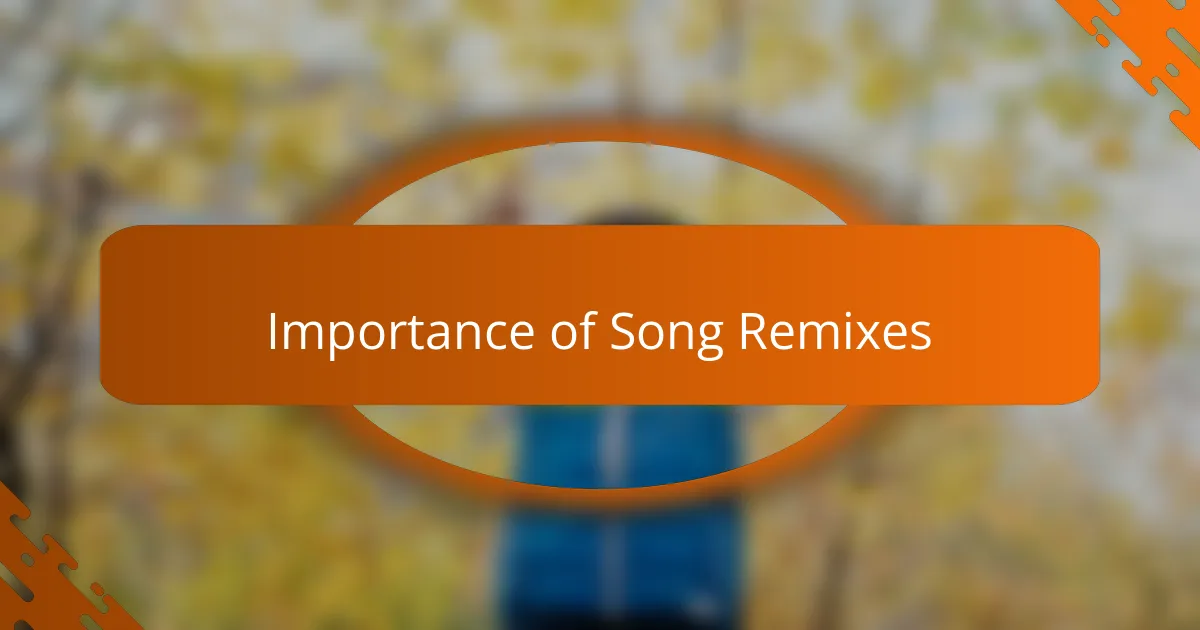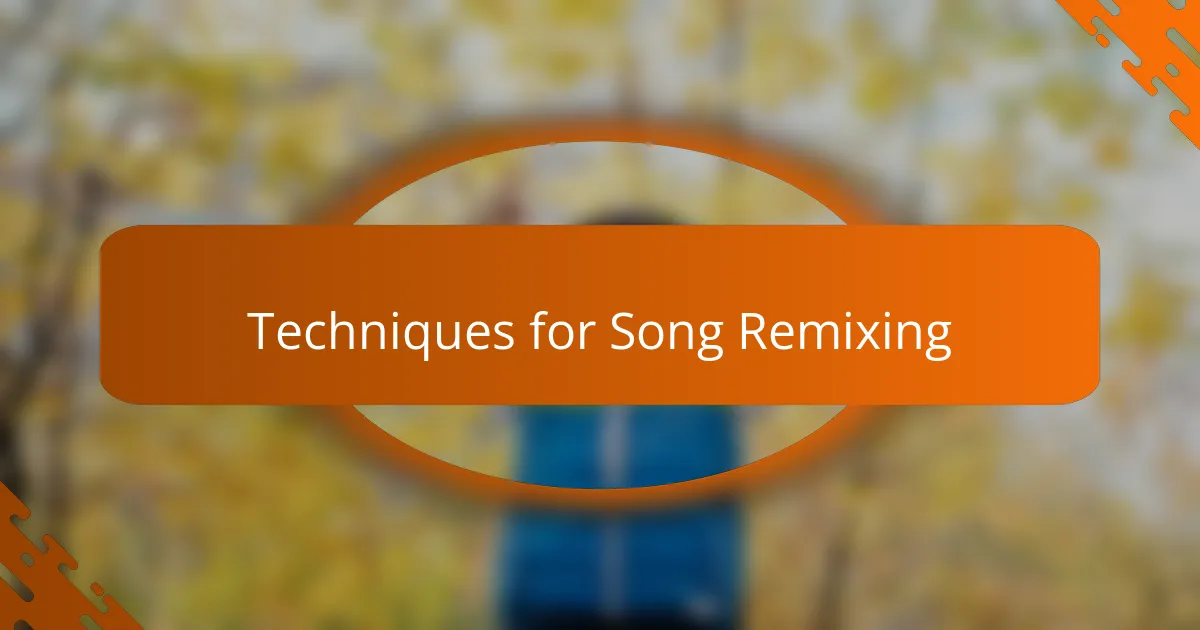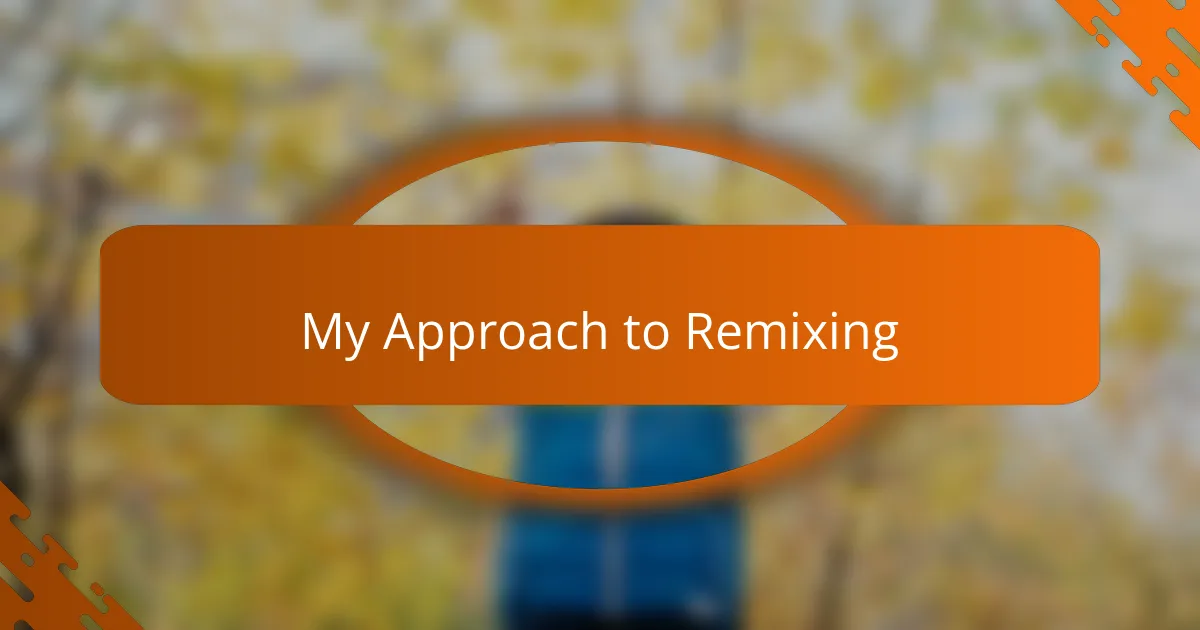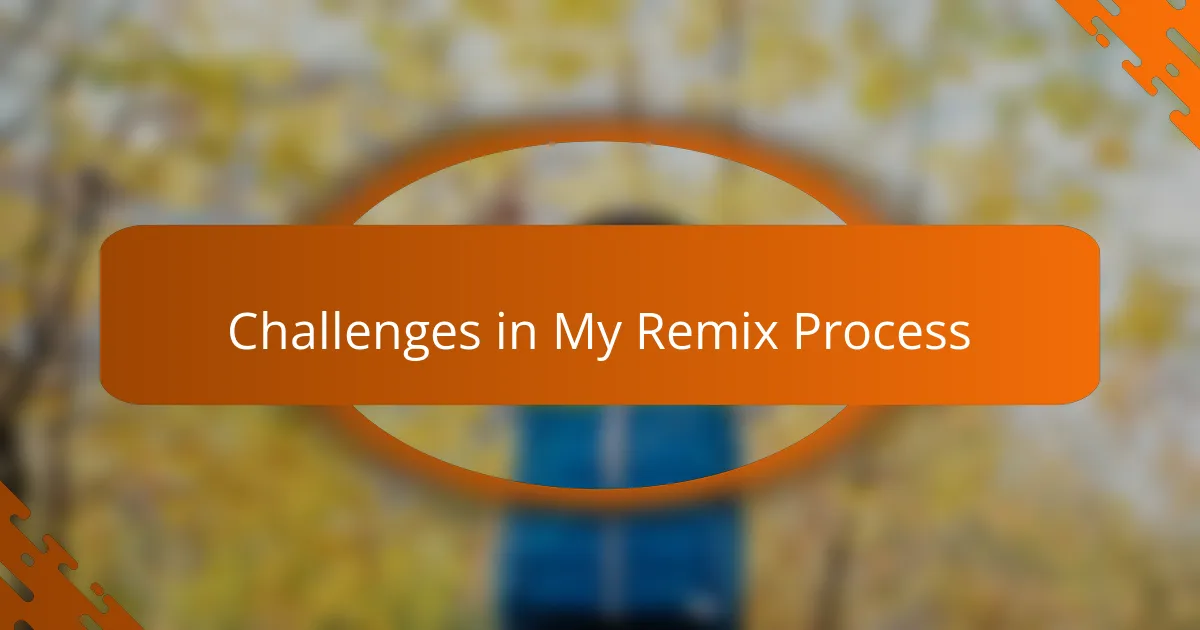Key takeaways
- A musician portfolio showcases talent through a selection of work, descriptions, influences, and personal anecdotes.
- Remixes serve as a bridge between generations, introducing classic songs to new audiences and fostering artist collaboration.
- The Beatles’ music is notable for its innovative structures, emotional resonance, and cultural relevance.
- Successful remixing involves respecting the original song while incorporating modern techniques to evoke new feelings and interpretations.

Musician Portfolio Overview
Creating a musician portfolio is essential for anyone looking to showcase their talents and connect with an audience. I’ve often found that a well-crafted portfolio doesn’t just highlight your work; it tells your unique story. For example, when I decided to remix a song by The Beatles, I included my version alongside my creative process, illustrating how I merged their timeless melodies with my own style.
When curating my portfolio, I focused on key elements that reflected my artistic journey. Here are some crucial components to consider:
- A selection of your best work, including audio samples or videos.
- A brief description of each piece that explains your inspiration and creative process.
- An overview of your musical influences, highlighting how they shape your sound.
- Personal anecdotes that provide deeper insights into your experiences as a musician.
- Contact information and social media links to engage with potential collaborators and fans.

Importance of Song Remixes
Remixing a song, especially one as iconic as a Beatles track, serves as a bridge between generations. It allows new audiences to connect with timeless music in fresh ways, breathing new life into classic melodies. I remember the first time I shared my remix with friends; seeing their excitement reflected my own joy in reinterpreting a song that meant so much to me.
Through remixes, artists can express their creativity, make bold statements, or simply add their unique flair. I’ve learned that reinterpretation opens dialogues about originality and influences, and it invites listeners to hear songs from different angles. Here are a few reasons why I believe song remixes hold significant importance:
- They create opportunities for collaboration among artists from various genres.
- Remixes can introduce older songs to younger audiences, fostering appreciation for musical history.
- They allow artists to express personal stories or cultural experiences through familiar melodies.
- By altering arrangement and production, remixes can highlight different emotional elements within the original track.
- They contribute to an ever-evolving music industry landscape, driving innovation and diversity in sound.

Understanding The Beatles’ Music
The Beatles had a unique ability to blend various musical styles, from rock and pop to psychedelia, which created a rich tapestry of sound that resonated with millions. I remember the first time I listened to “A Day in the Life”—the emotional buildup and the surprising orchestral crescendo left a lasting impression on me. It’s this inventive spirit that inspires many musicians, including myself, to explore and reinterpret their iconic songs.
When I dig deeper into their discography, I often find myself drawn to the intricate harmonies and lyrical depth. Their music is not just about catchy tunes; it delves into themes of love, peace, and self-discovery. Here are some key elements that make The Beatles’ music so compelling:
- Innovative Song Structures: They often used unconventional formats, breaking away from the standard verse-chorus pattern.
- Layered Harmonies: Their vocal arrangements create a rich, immersive listening experience.
- Cultural Influence: Their work reflected and often influenced the social changes of their time, adding a layer of relevance.
- Experimentation with Sound: From studio techniques to genre blending, they pushed the boundaries of what music could be.
- Emotional Resonance: Their lyrics often tap into universal feelings, making their songs relatable across generations.
This understanding of their artistry is crucial as I think about how to remix their songs meaningfully.

Techniques for Song Remixing
When remixing a song like those by The Beatles, I found that layering different sounds is key. For instance, I took a classic track and added contemporary beats, which not only made it fresh but also resonated with my own musical style. It felt like breathing new life into something that had already touched so many hearts.
One of my favorite techniques involves isolating and rearranging vocal samples. This allows me to create an entirely new narrative. Remember the moment I hit the perfect loop? It was exhilarating; I could almost hear the echoes of the original song blending with my interpretation.
Here are some effective techniques I used for my remix:
- Sampling: Extract snippets of the original song and rework them.
- Beat Matching: Align the tempo to create a seamless flow.
- Rearranging Structure: Change the order of verses or choruses for unexpected surprises.
- Layering Instruments: Introduce different instruments to complement or contrast the original sound.
- Vocal Manipulation: Alter pitch and effects on vocals to craft a unique sound.
- Adding Effects: Use reverb and delay to create depth and atmosphere.
Each technique opened up new creative avenues for me, making the remix process an emotional and fulfilling journey.

My Approach to Remixing
My approach to remixing is deeply rooted in a combination of respect for the original material and a desire to bring something fresh to the table. When I listened to the Beatles’ track I wanted to remix, I felt an immediate connection to its melody and rhythm, which sparked a blend of nostalgia and inspiration in me. I always start by analyzing the song’s structure and identifying key elements that resonate with me emotionally—this helps me determine what to keep and what to transform.
While remixing, I also consider how to incorporate modern production techniques. For instance, adding electronic beats or altering the tempo can breathe new life into a classic. It’s fascinating how a slight change can evoke entirely different feelings, often reminding us of new experiences.
| Original Element | Remixed Element |
|---|---|
| Classic Guitar Riff | Synthesized Melody |
| Traditional Drumming | Upbeat Electronic Beat |
| Vocal Harmonies | Layered Samples with Effects |

Challenges in My Remix Process
When I embarked on remixing a song by The Beatles, I encountered several unexpected challenges. One significant hurdle was maintaining the essence of the original while also inserting my own flavor. I remember struggling with the guilt of altering something so beloved. How could I possibly do justice to a classic? It took time for me to understand that remixing is about honoring the original while also allowing fresh interpretations to flourish.
Another challenge arose with the technical aspects of my remix. Juggling different software tools and learning to manipulate audio effectively was overwhelming at times. I recall an instance where I spent hours trying to perfect a drum loop, only to realize that it distracted from the beautiful harmonies I aimed to highlight. It made me question if I was getting too caught up in the details. Yet, that persistence was crucial; every tweak brought me closer to a sound that felt authentically mine.
Lastly, I faced the emotional challenge of sharing my remix with others. After pouring my heart into it, I felt vulnerable. Would listeners embrace my version or prefer the original? When I finally decided to share it, the anxiety was palpable. However, hearing feedback—both positive and constructive—was a reminder of why I create music: to connect and inspire through the uplifting power of song.